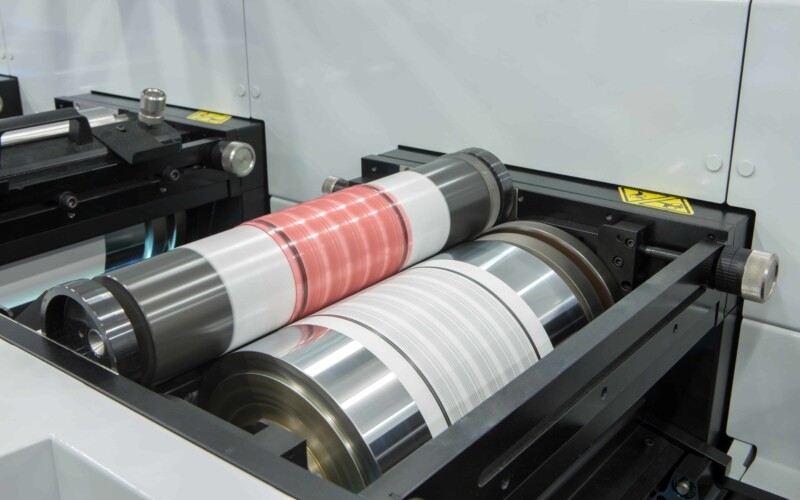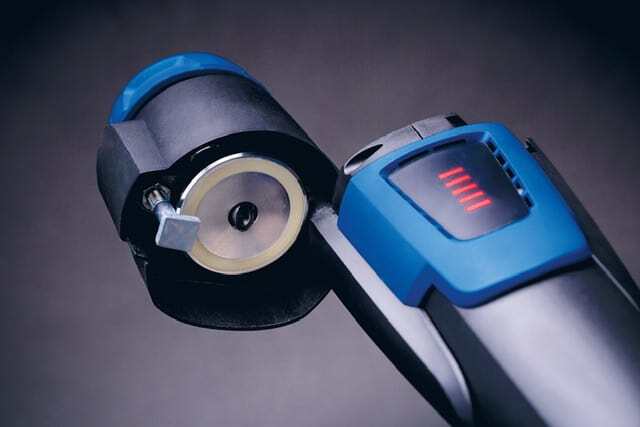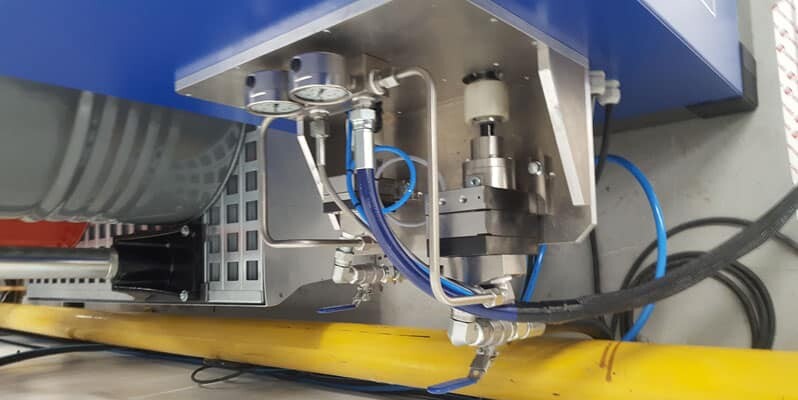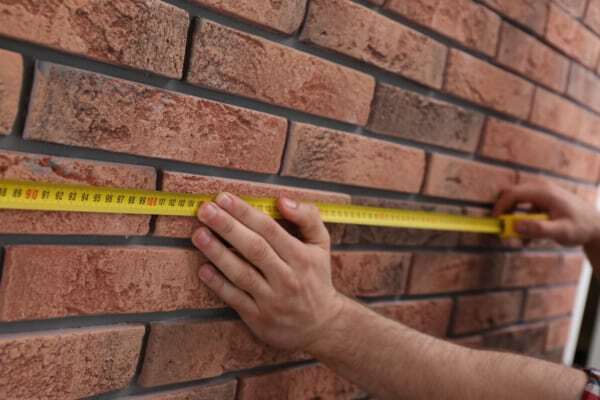Adhesive application methods and equipment

Choosing adhesive application methods and equipment
As adhesives come in a wide variety and versatility, there are also numerous adhesive application methods and equipment to carry out the application. One application method is not better than the rest, but the choice of how to apply adhesive should be based on the adhesive types, the nature of the product, surface requirements, initial investment, maintenance costs and labor costs.
We distinguish between six main types of adhesive application methods which are described later on in this article, and can be realized with various adhesive application equipment. The methods include:
1. Dots and beads
2. Spray
3. Web coating
4. Brush and trowel
5. Curtain coating
6. Film application here
Adhesive beads & dots – most common of adhesive application methods
One of the most common adhesive application methods are beads and dots. Adhesive beads and dots are usually applied through different dispensing nozzles which allow for precise placing of the dot or bead. The simplest form of a glue dot applicator machine is a hand held squeeze bottle, however in industrial applications other, more advanced equipment is used.
There are several pieces of equipment that are used for creating precise and consistent beads and dots in certain patterns. These include handguns, automated pneumatic guns, automated electric guns and jetting. The advantage of applying adhesive beads and dots is that the equipment offers complete control over where the adhesive is applied as well as how much of the adhesive is used. However, purchasing the equipment may be rather expensive even though costs are reduced due to minimum adhesive loss.
Handgun - the basic adhesive equipment
Handguns exist as cartridge based and hose fed systems. The cartridge based handguns are handy as they are portable. They are an inexpensive option for field work, touch ups and low volume assembly. Nevertheless, they require expensive cartridges and frequent filling. The product quality is dependent on the skills of the adhesive applicator.
Hose fed handguns are common hot melt adhesive application equipment. They can be used for horizontal gluing on flat panels with nozzles that create dots or spiral patterns. Hose fed handguns offer more consistent output than cartridge guns.
Automated adhesive application with a pneumatic gun
Pneumatic air driven guns are often used when automated adhesive application of dots or beads is desired. The automated glue application systems guarantee accurate timing, and they are not affected by adhesive viscosity or system pressure. Nowadays, the most innovative automated pneumatic gun application equipment is reliable and has a long service life, which reduces replacement costs. Most of this adhesive equipment can run at a speed of 3500 cycles per minute or more.
Automated electric gun
When better pattern control and consistency are required for high speed adhesive applications, an automated electric gun is a proper choice of equipment. They usually incorporate an all-electric driver which optimizes performance. As compressed air and dynamic seals are not used, automatic electric guns have lower costs and require minimum maintenance. Their service life is also generally longer than the one of pneumatic systems, which makes it one of the cheaper adhesive application methods.
Jetting with an industrial glue machine
Jetting is a non contact adhesive application method which is used only for applying dots and beads. In electronics assembly, jetting is a common application method since it allows for dispensing material in small spaces. In this adhesive applicator machine the jet moves above the substrate and uses a high speed mechanism to shoot precise and consistent dots, patterns or lines onto the substrate. This allows for extremely fast and accurate application of adhesives. Additionally, the jets require minimum cleaning and maintenance, which reduces costs.
Spray application of adhesives
Next to beads and dots, spraying is one of the most widely used adhesive application methods as it allows for applying a thin layer of almost any adhesive over a large surface in a short time. Spray application also enables adhesive application on uneven substrates. However, as the adhesives are atomized in the spray gun, much of it can be lost in the air (over spray), which requires additional safety measures and consideration of costs of lost adhesive. The over spray may also result in more extensive cleaning than when working with other adhesive application methods and equipment. Nonetheless, today´s innovative glue spray machine systems have reduced over spray – if you want to know more about zero over spray systems, contact us.
Air spray as adhesive application equipment
Low volume low pressure (LVLP) spray systems are suitable for applying consistent and thin layers of low viscosity adhesives. Typically, round or fan patterns of various diameters up to 165 mm can be applied. These adhesive application systems generally result in over spray yet they offer the possibility to adjust fluid flow, nozzle air and post air cutoff.
Airless spray - Reliable adhesive applications
Airless spray guns are ideal when maximum reliability is required in high production adhesive applications. These systems also allow for automation, controlled deposition and reduced over spray. Airless spray works the best when moderate viscosity adhesives are used. Air-actuated spray systems are preferred when precise application and high speed are desired.
Fiberized spray in 3 patterns
Fiberazion is the adhesive application method that forms an open net-like pattern that is a meltblown, swirl or random fiber. Fiberized spray provides accurate pattern control and minimizes over spray.
- Meltblown: meltblown nozzles allow for high speed production and continuous application. These are very suitable for wide web lamination and they improve the looks and hand-on personal hygiene products and result in excellent fine fiber adhesive coating in high speed tissue plybonding.
- Swirl: these nozzles increase bond strength and improve product quality in hot melt adhesive non wovens, laminating applications during product assembly. Usually adhesive fiber size, density and pattern width can be controlled. It is possible to make low density, large fiber patterns for best bond strength, open patterns for absorbency and high density, fine fiber patterns for heat sensitive substrates.
- Random fiber: there are also nozzles that are suitable for producing random hot melt adhesive coatings for continuous high speed lamination of roll based materials. Random fiber nozzles enable dense, uniform coverage with tight edge control and patterns. This can yield tolerance to process parameter changes, consistent bonding and improved product quality.
Web coating - an efficient adhesive application method
Web coating is a method where different adhesive application equipment can be used to create a web-like pattern of adhesive onto a wide variety of substrates. For most of the web coating equipment, it is crucial that the substrate is flat and even. The web coating adhesive applications can be automated, which increases the process speed.
Slot applicator - a precise adhesive application machine
On or off roll slot applicators are designed to deliver precise and continuous adhesive coatings. They provide accurate thickness control and include a system that prevents premature curing of the adhesive. Slot applicators operate at high speeds allowing for 4000 to 5000 cycles per minute.
Wheel and roll coating adhesive application systems
When applying adhesives by wheel or roll coating, several pattern options are available. The patterns can be customized to meet the production needs. This allows for applying adhesive from the top, bottom or side depending on the needs of the product and process. The only downside of wheel and roll coating is that the equipment will need time consuming cleaning if adhesive cures on it.
Dipping in a glue application machine
When low viscosity adhesives are desired to be applied in thick layers, dipping is a suitable method. As the name implies, the part is dipped into the adhesive. This enables adhesive application on parts with difficult shapes and hard to reach corners.
Transfer printing with the right adhesive application equipment
Transfer printing refers to a form of roll coating where a pattern pad is pressed against a pad or run across a roller to pick up adhesive. Then the pad is used to print the adhesive pattern onto a part or substrate. Most often rollers are used, however, flat plates are also suitable. Transfer printing is used for applying a very thin layer of adhesive in an accurate manner. Envelope flaps and windows can be given an adhesive layer through transfer printing.
Brush and trowel - the oldest of adhesive application methods
Using a brush or trowel to spread adhesive to a substrate is the very basic adhesive application method. The success of the application is dependent on the product quality, equipment quality, and most importantly, the skills of the operator. The advantage of brush and trowel applications is that it enables adhesive application also to uneven surfaces. However, the layer thickness and amount of adhesive applied are more difficult to control and may result in unexpected costs or adhesive system failure, in the worst case. One should also keep in mind that only a limited number of adhesives can be applied using brush or trowel.
Curtain coating for good coverage
Curtain coating refers to an adhesive adhesive application method which involves a so-called waterfall of adhesive – the curtain. The part is pressed through the curtain which results in a layer of adhesives sticking to the surface. The liquid that does not land on the part is collected and pumped back to the system to keep the waterfall running. The thickness of the adhesive layer is determined by the viscosity of the material and the speed at which the part passes through the curtain. Curtain coating is most suitable when a large area is wished to be covered in heavy adhesive.
The major advantage of curtain coating is that it results in a uniform adhesive layer and guarantees the same result for the parts to come. Furthermore, curtain coating is an automated process, which reduces labor costs and improves process efficiency. However, the equipment is generally more expensive than those required by other adhesive application methods. Also the limited number of suitable adhesives can be seen as a disadvantage.
Applying adhesives as a solid film
In recent years, applying adhesive as a solid film has become an extremely popular method. The adhesive is in the form of a thin film and it is deposited to the substrate using a special adhesive applicator machine. Most films use pressure sensitive adhesives, but also heat activated adhesive films are available. Generally adhesive films exist as two types: unsupported and supported film. The latter use a carrier sheet which is removed once one side of the film has been deposited to the surface. Adhesive films are especially popular in the packaging industry.
Which of the adhesive application methods is the best for your process?
Many factors affect the choice of adhesive application method. These include the type of adhesive, nature of product, substrate requirements and process design. Also financial factors play a role in the decision making process: how much does the equipment cost? Is frequent maintenance needed? What about cleaning? We have the answers to all these questions and more. Contact us in case you are looking for the best adhesive application method for your process and product.
What solution are you looking for?
We are specialized in the application instruments tools equipment. Need the best products or advice? Then please leave your details and we will get in touch.


